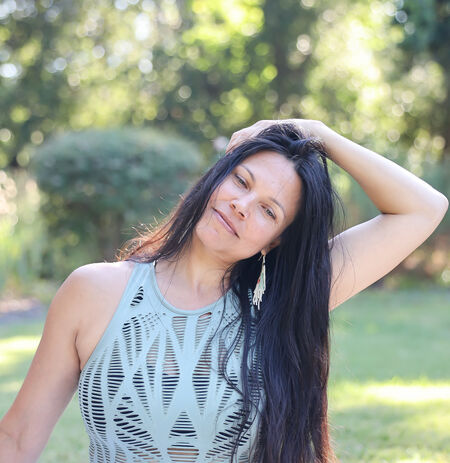The neck and shoulders are the most likely places within our bodies to display signs of stress in the form of tension. The tension is most likely coming from stress and that stress is displayed or deposited in this region of the body. Taking advantage of yoga stretches for this area in the body can be very helpful for relieving tension.
I want to be clear that these yoga poses do not alleviate the causes of tension, they simply alleviate the symptoms. Eventually, these symptoms will arise anew if the causation is not addressed. The good news is that yoga can also address the cause through meditation; not through poses. Yet, you can bring this meditation into the poses, and therefore, in one act called “asana”, you can relieve the symptoms and address and eventually eradicate the cause. Asana means to bring the qualities of meditation into action.
Yoga for neck and shoulder relief works by using poses that address this region to dissolve the tension through gentle and patient stretching. Addressing the region and spending some time there will allow the tension to dissolve through a gentle stretch. It works! Just remember if the thoughts and reactions that created this tension in the first place arise again, the tension in this region will rise again!
You could say that yoga poses for the shoulders and neck is a superficial fix, but it is a necessary fix to relieve symptoms. It’s necessary because it relieves discomfort, but it’s superficial because it does not prevent the discomfort from returning. For that, we need to address the thoughts and reactions that are at their source. The first step in this is “awareness.” Awareness is meditation’s objective. It’s through awareness one becomes aware when the mind slips into stress-producing thoughts and reactions. This awareness gives us a choice to continue indulging in these stress-producing mentalities or to stop indulging.
Yoga Poses for Neck and Shoulders
Standing Forward Fold with Arms Crossed

This stretch has a multifaceted effect. It stretches the posterior deltoids and due to the forward bending position, the spine and most back muscles are stretched. It opens the upper back and stretches the hamstrings which can have a releasing effect across the entire torso.
Seated Hands Clasped Behind the Back
This is a wonderful and gentle stretch for your anterior deltoid. I really like this stretch because of its effects on my sternum, pectorals, scapulas, and even my deep upper middle back. Note, the model is seated on a block which is always an option, and so are any other seated positions.
Eagle Arms
This lateral and posterior deltoid stretch will also access the upper back and many of the tissues that intertwine the shoulder and upper back region creating a wonderful stretch and release. Note, the model is sitting on a block to relieve knee discomfort. You can sit in any position.
Arm Across the Chest
This picture depicts a nice stretch and gentle rotation for your shoulder joint, the posterior deltoid is lengthened and stretched as well as the connective between the scapula, shoulder joint, and deltoid. Note, the male is seated on a block to ease any pressure on the knees. Any seated, standing, or reclining position is fine.
One more item here I’d like to mention is the type of yoga you practice. There are some forms of yoga practice created to produce a deeply relaxing state of being. Yes, all yoga practices will create a relaxing effect; yet, there are some that emphasize relaxation more than others. These yoga practices are called “yin” and “restorative” yoga practices. Yin and restorative yoga for shoulders or neck routines are prolific due to this region’s fame in carrying tension. My guess is most yin and restorative yoga practices will contain stretches for this region. If you find a routine that doesn’t include this region, just move on to the next as you will certainly find many.
Ultimately when understanding what constitutes a yin or restorative class, you could create your own yin or restorative flow using these poses.
I hope this was helpful!




